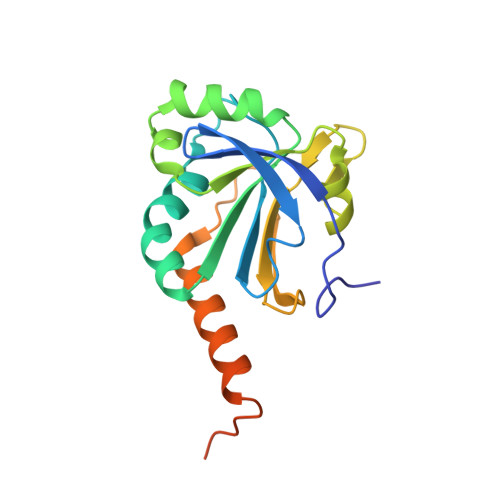Structure, mechanism and ensemble formation of the alkylhydroperoxide reductase subunits AhpC and AhpF from Escherichia coli
Dip, P.V., Kamariah, N., Subramanian Manimekalai, M.S., Nartey, W., Balakrishna, A.M., Eisenhaber, F., Eisenhaber, B., Gruber, G.(2014) Acta Crystallogr D Biol Crystallogr 70: 2848-2862
- PubMed: 25372677
- DOI: https://doi.org/10.1107/S1399004714019233
- Primary Citation of Related Structures:
4O5Q, 4O5R, 4O5U - PubMed Abstract:
Hydroperoxides are reactive oxygen species (ROS) that are toxic to all cells and must be converted into the corresponding alcohols to alleviate oxidative stress. In Escherichia coli, the enzyme primarily responsible for this reaction is alkylhydroperoxide reductase (AhpR). Here, the crystal structures of both of the subunits of EcAhpR, EcAhpF (57 kDa) and EcAhpC (21 kDa), have been solved. The EcAhpF structures (2.0 and 2.65 Å resolution) reveal an open and elongated conformation, while that of EcAhpC (3.3 Å resolution) forms a decameric ring. Solution X-ray scattering analysis of EcAhpF unravels the flexibility of its N-terminal domain, and its binding to EcAhpC was demonstrated by isothermal titration calorimetry. These studies suggest a novel overall mechanistic model of AhpR as a hydroperoxide scavenger, in which the dimeric, extended AhpF prefers complex formation with the AhpC ring to accelerate the catalytic activity and thus to increase the chance of rescuing the cell from ROS.
- School of Biological Sciences, Nanyang Technological University, 60 Nanyang Drive, Singapore 637551, Singapore.
Organizational Affiliation:
















